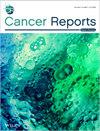Identifying and Preserving Parathyroid Glands During Thyroid Surgery Using Indocyanine Green and a Review of the Literature
Abstract
Background
The research aims to investigate the potential use of near-infrared fluorescence imaging with Indocyanine green (ICG) to detect the parathyroid glands (PGs) during surgery and to evaluate their blood supply. Additionally, a review of existing literature was performed to evaluate the utility of near-infrared imaging with ICG in identifying parathyroid glands and reducing the incidence of postoperative hypoparathyroidism, a common complication associated with this type of surgery.
Methods
The study was carried out at the Cancer Institute, Tehran University of Medical Science, from December 2022 to April 2023, with 30 subjects participating in the research. In order to identify the PGs and evaluate their vascularization after resection, the patients were given an injection of 5 mg of Indocyanine green (ICG). To determine the usefulness of this technique, a comprehensive review of existing research was conducted using the PubMed and Cochrane Library electronic databases for relevant studies published up to September 2023. The reference lists within those studies were also examined to capture any further relevant research.
Result
A total of 30 surgical procedures were carried out, during which the calcium level of the patients was monitored. On the first day post-surgery, calcium levels ranged from 7 to 9.8 mg/dL, with an average of 8.4 mg/dL, and a median (interquartile range) of 8.5 mg/dL (7.87–8.82 mg/dL). On the tenth day post-surgery, the mean calcium level was 8.34 mg/dL, with a median (interquartile range) of 8.2 mg/dL (8–8.6 mg/dL). Out of all the patients, 23.6% had avascular parathyroid glands and underwent auto transplantation. In two patients, the surgical team was only able to identify the parathyroid gland (PG) with the help of Indocyanine green (ICG); for the remaining 28 patients, this technique confirmed the presence of parathyroid tissue. A total of 72 PGs were detected with near-infrared fluorescence imaging (NIRF) imaging. There were no complications during or after surgery due to the use of ICG. This article reported on 34 studies where a total of 1699 procedures were conducted, which included total thyroidectomy, lobectomy, and parathyroidectomy. The average dose of ICG administered was found to be 6.96 mg, with a median (interquartile range) of 7.5 mg/dL (5–10 mg/dL). Our findings showed that ICG successfully helped surgeons locate parathyroid glands in an average of 88.25% of cases.
Conclusion
Our research indicates that utilizing Indocyanine green with a fluorescence imaging system is a safe, straightforward, and efficient method to assist surgeons in avoiding injury to the parathyroid glands during surgery and potentially anticipating complications such as post-operative hypoparathyroidism. However, it should not be relied upon as the sole screening strategy. It is better to be used after surgeons have initially identified the parathyroid glands.


 求助内容:
求助内容: 应助结果提醒方式:
应助结果提醒方式:


